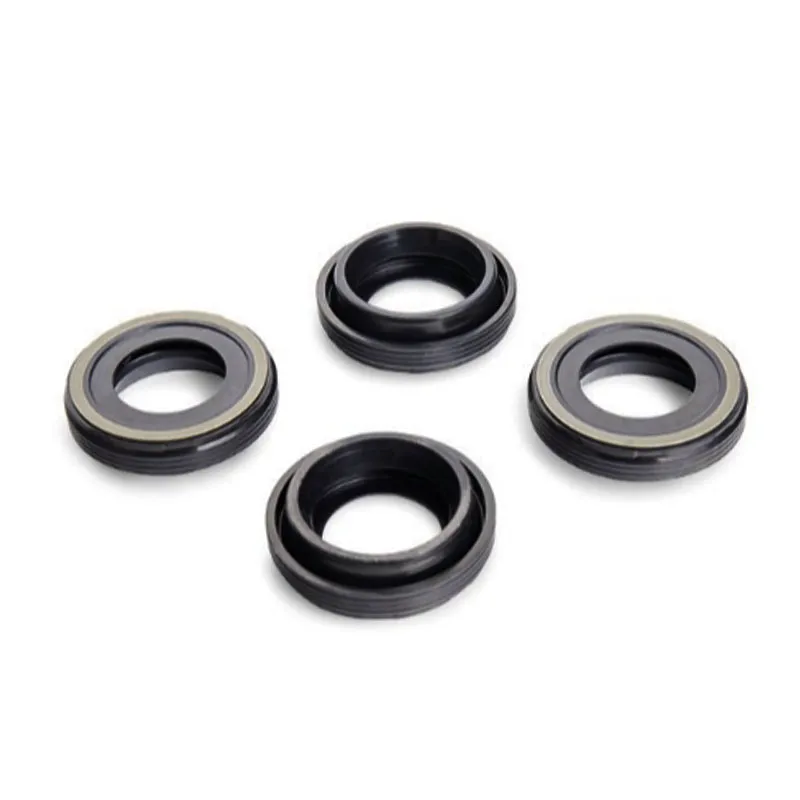flat gasket seal
Understanding Flat Gasket Seals Essential Components for Leak Prevention
Flat gasket seals are critical components used in various industries to prevent leaks between mating surfaces. These seals are designed to fit into the space between two flanges, ensuring a tight seal that can withstand pressure and temperature fluctuations. This article delves into the characteristics, materials, applications, and advantages of flat gasket seals, highlighting their importance in mechanical systems.
What is a Flat Gasket Seal?
A flat gasket is a sealing device made from a piece of material that is shaped to fit between two surfaces. Unlike other types of gaskets, such as spiral wound gaskets, flat gaskets are generally simpler in design and consist of a single layer. Their primary function is to create a seal that prevents fluids or gases from leaking out of joints or connections in various mechanical systems. The effectiveness of a flat gasket seal depends on its material properties, the installation technique, and the conditions under which it operates.
Materials Used in Flat Gasket Seals
Flat gaskets can be made from a variety of materials, each suited for different applications and environments
. Common materials include1. Rubber Used for low to medium-pressure applications; rubber gaskets provide excellent flexibility and sealing properties. 2. Cork Often utilized in automotive applications, cork gaskets are resistant to weathering and offer good compressibility. 3. PTFE (Teflon) Known for its chemical resistance, PTFE gaskets are ideal for harsh environments, including those involving aggressive chemicals. 4. Graphite Used mainly for high-temperature and high-pressure applications, graphite gaskets can withstand extreme conditions. 5. Metal Metal gaskets, such as those made from stainless steel, provide durability in high-stress environments and are often used in flanged connections.
Applications of Flat Gasket Seals
flat gasket seal

Flat gasket seals are employed in a wide range of industries, including
- Automotive Gaskets are crucial in engines, transmissions, and exhaust systems to prevent fluid leaks. - Oil and Gas In pipelines and refineries, flat gaskets ensure that hazardous materials do not escape into the environment. - Manufacturing Machinery often requires gaskets to maintain pressure and prevent contamination between components. - Aerospace High-performance gaskets are used in engines and hydraulic systems, where reliability is paramount.
Advantages of Flat Gasket Seals
Flat gasket seals offer numerous benefits, including
1. Simplicity Their straightforward design makes them easy to manufacture and install. 2. Cost-Effectiveness Generally less expensive than more complex sealing mechanisms, flat gaskets are a cost-efficient solution for many applications. 3. Customizability They can be made in various shapes and sizes, allowing for tailored solutions to specific sealing needs. 4. Versatility Available in various materials, flat gaskets can be selected according to the operational environment, enhancing their performance.
Conclusion
In summary, flat gasket seals are indispensable components in many mechanical systems. Their ability to prevent leaks while accommodating a range of pressures and temperatures makes them suitable for numerous applications across diverse industries. Understanding their materials, applications, and advantages can help engineers and technicians select the right gasket for their specific needs, ensuring the efficiency and safety of the systems in which they are used. By investing in high-quality flat gasket seals, businesses can enhance operational reliability and significantly reduce the risks of leaks and the associated costs.
-
Understanding the Front Main Engine Seal: Purpose, Maintenance, and Installation
News Jul.29,2025
-
Understanding O-Rings and Seal Rings: Types, Applications, and Custom Solutions
News Jul.29,2025
-
Understanding Crankshaft Oil Seals: Rear Seals, Pulley Seals, and Their Role in Engine Integrity
News Jul.29,2025
-
The Importance of Front and Rear Crankshaft Seals in Engine Performance and Oil Management
News Jul.29,2025
-
Crank Oil Seals: Functions, Types, and Cost Considerations in Engine Maintenance
News Jul.29,2025
-
A Comprehensive Guide to O-Rings and Seals: Types, Materials, and Global Applications
News Jul.29,2025
-
Mastering Diesel and Performance Engine Maintenance: A Guide to Critical Oil Gaskets
News Jul.28,2025
Products categories















